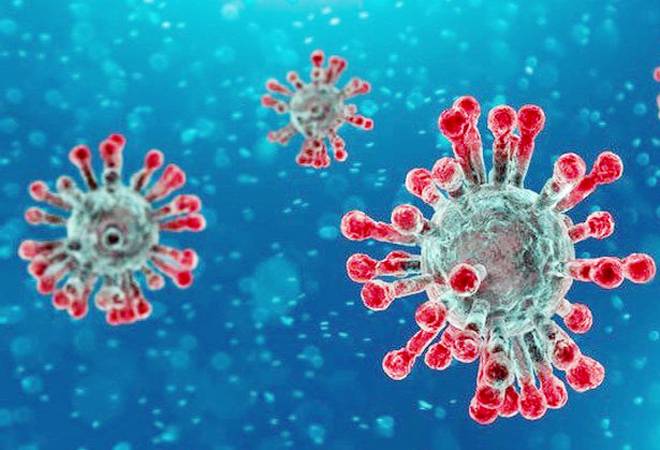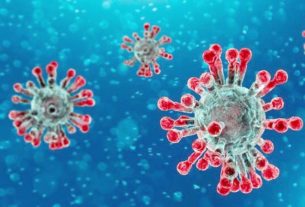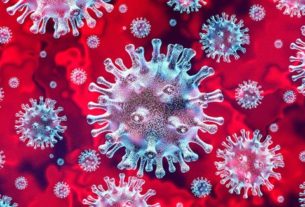From Our Bureau
6TH AUGUST 2020
India witnessed a big surge with 56,282 fresh COVID-19 positive cases reported on Thursday, the highest for a single day, taking the country’s cumulative tally to 19,64,536. The death toll rose to 40,699, with 904 fatalities recorded in the last 24 hours.
The total recoveries of COVID-19 patients have jumped to 13,28,336 with 46,121 COVID-19 patients being discharged in the last 24 hours. With such consistent increase in recoveries, the gap between recovered patients and active COVID-19 cases has reached 7,32,835.
The recovery rate has continued its upward journey to reach another record high of 67.62 percent amongst COVID-19 patients.
The actual case load of the country is the active cases, numbering 5,95,501, which is 30.31 percent of the total positive cases. They are under medical supervision either in hospitals or in home isolation.
The active cases as a percentage of total cases have seen a significant drop from 34.17 percent on 24th July 2020 to 30.31 percent as on today.
With a record 6,64,949 tests conducted in the last 24 hours, the cumulative testing as on date has reached 2,21,49,351.
Under the ‘Whole of Government’ approach, the public and private sector resources are combined towards the COVID-19 response and management under the Central Government-led strategy.
Focused implementation of “Test Track Treat” strategy by the Central Government and State/Union Territory governments, ramped up hospital infrastructure and testing facilities, and emphasis on treatment of the hospitalized patients through the Standard of Care protocol advised by the Central Government have effectively ensured that mortality of COVID-19 patients is contained. As a result, the Case Fatality Rate (CFR) has been low when compared to the global scenario and it has been progressively falling. The Case Fatality Rate stands at 2.07 percent today.
Dr Harsh Vardhan interacts with WHO Regional Director and Health Ministers of South East Asia Region
Dr Harsh Vardhan, Union Minister for Health and Family Welfare, joined a virtual meeting of the Regional Director of WHO for South East Asia (SEA) Dr Poonam Khetrapal Singh with Ministers for Health of the member states of the region. The meet was focused on maintaining essential health services and public health programmes in the context of the COVID-19 pandemic.
Dr Harsh Vardhan spoke about India’s tryst with COVID-19. He highlighted how India had been preparing for the pandemic as soon as China informed WHO on 7th January. Earlier viral outbreaks like the Avian Influenza, H1N1 09 Influenza, Zika and Nipah had provided institutional memory in designing containment and management strategies using ‘whole of government’ approach, he added.
“India’s proactive and graded multi-level institutional response to COVID made it possible to have very low cases per million and deaths per million in spite of having a high population density and low fractional GDP spending and per capita doctor and hospital bed availability as compared to other developed countries,” he pointed out.
On the efficacy of the Lockdown, Dr. Harsh Vardhan explained how it was effective in slowing down the rate of growth of cases and gave the government time to augment the health infrastructure and testing facilities.
“From one lab in January, India has 1,370 labs today. Indians anywhere can access a lab within 3 hours travel time. 33 of the 36 States and Union Territories exceed WHO’s recommendation of testing 140 people per million per day,” he added.
He also pointed out that the Containment Strategy has been successful in that almost 50 percent of the cases are from three States and 32 percent of the rest are from seven States. The spread of the virus thus has been contained.
He recalled that DRDO built make-shift hospitals capable of housing 1,000 patients, with an additional 100 ICU beds, in a record ten days. The AIIMS, New Delhi, helped identify the root causes of mortality and made high-impact interventions possible that significantly curbed the mortality rate from 3.33 percent (18th June) to 2.11 percent (3rd August).
The Union Health Minister stated that as a strategy, India divided its facilities into COVID and Non-COVID facilities. This helped in better management of the severe from the moderate and mild categories of patients, and ensured that the hospital facilities were un-burdened to ensuring effective treatment of the hospitalised cases. This has helped to keep India Case Fatality rate below the global average. Today, it has touched 2.07 percent.
Dr Harsh Vardhan also mentioned about the other measures taken by India. He said that the best practices from the States/UTs were uploaded for cross-learning on the National Health Innovation Portal (NHInP).
Mentioning some best practices, he recalled that the States like Chhattisgarh continued with immunization services even within the containment and buffer zones and delivered essential medicines of Hypertensive and Diabetes patients to homes.
Telangana tagged every pregnant woman with an ambulance to ensure safe and institutional delivery. Thalassemia and Dialysis patients were also transported using ambulances for availing timely services.
Odisha and West Bengal separated infrastructure and HR for COVID and non-COVID essential health services, thereby ensuring their optimum utilisation. Andhra Pradesh and Uttarakhand filled all the vacancies of all critical HR in public healthcare system during the pandemic. States such as Tamil Nadu, Uttar Pradesh and Kerala provided non-essential health services through tele-consultation using eSanjeevani OPD facility. (eom)


